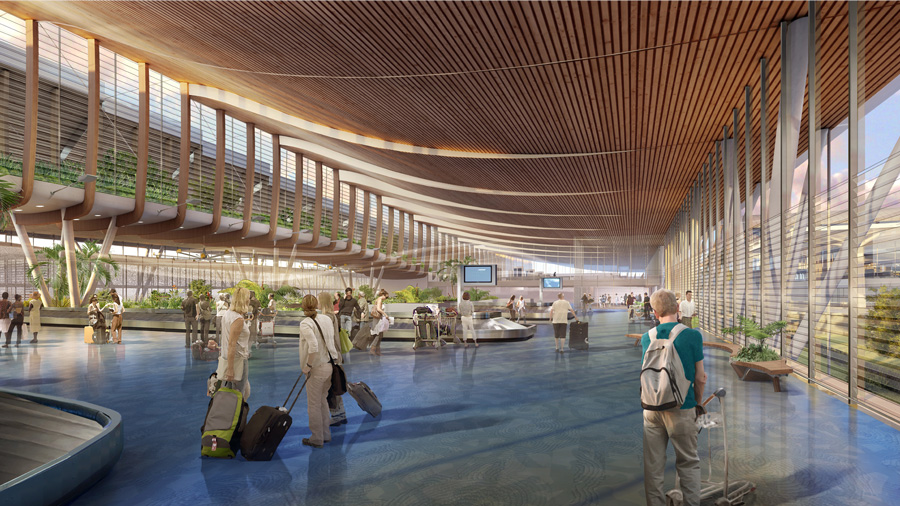
Photo: Roland Garros Airport - AIA Life Designers Perspectiviste - Marc Boudier
The extension of the Saint-Denis Roland Garros Airport on Réunion Island will set the example for premises open to the public, offering high environmental quality in the tropics. With a natural ventilation system at the center of the architectural choices, it is all the more challenging to ensure user comfort, resistance to cyclonic wind and fire safety.
In 2018, the CSTB was chosen to assist AIA Life Designers, the project manager of the operation, by conducting an airflow optimization study of the structure, supplemented by a wind loading study. The data was then used to study smoke extraction issues.
With commissioning planned for 2022, the airport will benefit from ecological design and accommodate 3.2 million passengers a year.
Wind management: key to project success
The airport location is subject to strong and frequent winds, offering favorable conditions for the implementation of natural ventilation within the structure. The CSTB was asked to use its expertise to conduct experiments in a wind tunnel to check and optimize the ventilation principle. A 1/150 scale model of the extension was integrated into the site's topography to test the ventilation systems, airflow and, more generally, thermal cooling using several wind configurations. The model was also tested under cyclonic conditions, meaning winds over 155 miles (250 kilometers) per hour, to assess pressure fields and determine local and overall forces on the structure. The study results demonstrated the need for architectural modifications to ensure user comfort in all areas throughout the year.
The challenge for fire safety management
Fire regulations are strict for premises open to the public. The smoke extraction methods used must ensure that people will be able to evacuate under good conditions in case of fire, they must slow the spread of fire and facilitate the work of emergency services. The CSTB, which is independent and recognized for its expertise in this area, studied the smoke extraction system for the airport extension. The characteristics of the study are complex given the exposure to all winds, a roof and facades consisting of multiple louver flaps and inclusion of the environment in the structure design. Based on a model created using digital simulation covering several hundred meters around the building, validated with measurements in a wind tunnel, experts observed and analyzed the spread of fire and smoke extraction in seven fire scenarios, with three wind directions and various louver flap opening configurations.
After analyzing a large amount of data, the results were conclusive and made it possible to determine the number and locations of louver flaps installed for smoke extraction.
- Client: AIA Life Designers Group
- Location: Réunion Island
- Year: 2018

 Major Structures
Major Structures  Health & Comfort
Health & Comfort  Energy & Environment
Energy & Environment